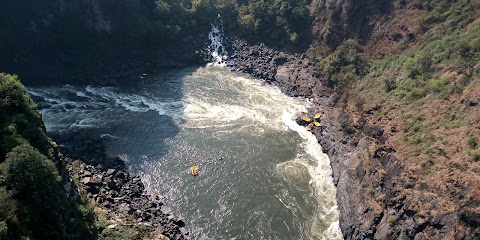
The Iconic Mopani Tree: Nature's Masterpiece in Hwange
Explore the enchanting Mopani Tree in Hwange, a symbol of resilience and beauty in Zimbabwe's stunning landscapes, perfect for nature lovers and adventurers.
Nestled in the heart of Hwange, the Mopani Tree stands as a symbol of resilience and beauty, attracting nature lovers and tourists alike to witness its unique charm. With its distinctive leaves and remarkable adaptability, this iconic species offers a picturesque backdrop for exploration and relaxation amidst the stunning landscapes of Zimbabwe.
A brief summary to Mopani tree
- JMF2+JQ2, Hwange, ZW
Local tips
- Visit during the early morning or late afternoon for the best light for photography.
- Bring binoculars for an enhanced wildlife viewing experience.
- Don’t forget to carry water and sun protection, as shade can be limited.
- Consider visiting with a guide to learn more about the ecology and significance of the Mopani Tree.
- Respect local wildlife and keep a safe distance from animals when observing.
Getting There
-
Walking
From the center of Hwange town, head southwest towards the Hwange Main Camp. Once you reach the entrance of Hwange National Park, continue walking along the main dirt road leading into the park. Keep an eye out for local wildlife and enjoy the scenery. After approximately 3 km, you will come to a fork in the road; take the right path. Continue walking for another 2 km until you reach the coordinates JMF2+JQ2, where the Mopani tree is located. Be sure to ask local guides or park rangers for further directions if needed.
-
Bicycle
Start your journey from Hwange town center. Rent a bicycle from a local shop. Head southwest towards Hwange Main Camp, following the main road. As you bike, be mindful of any wildlife crossing the road. After about 3 km, you will encounter a fork; take the right path. Continue biking for an additional 2 km, and you will arrive at the coordinates JMF2+JQ2, where you can find the Mopani tree. Make sure to wear a helmet and stay hydrated.
-
Guided Tour
Sign up for a guided walking tour from one of the tour operators in Hwange. The guides are very knowledgeable and will lead you through the national park. They will take you along the safest and most scenic routes to the Mopani tree, which is located at the coordinates JMF2+JQ2. Be sure to confirm the meeting point and time with your guide in advance.
Discover more about Mopani tree
Iconic landmarks you can’t miss
Hwange Aerodrome
14.3 km
Experience the thrill of wildlife in Zimbabwe as you travel through Hwange Aerodrome, the gateway to Hwange National Park's stunning landscapes.
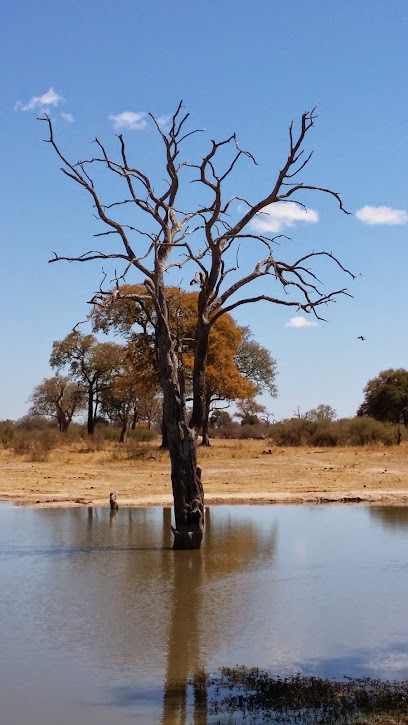
Four Fingers Book Cafe
16.4 km
Experience the charm of Four Fingers Book Cafe in Hwange, where literature meets culinary delights in a cozy atmosphere.
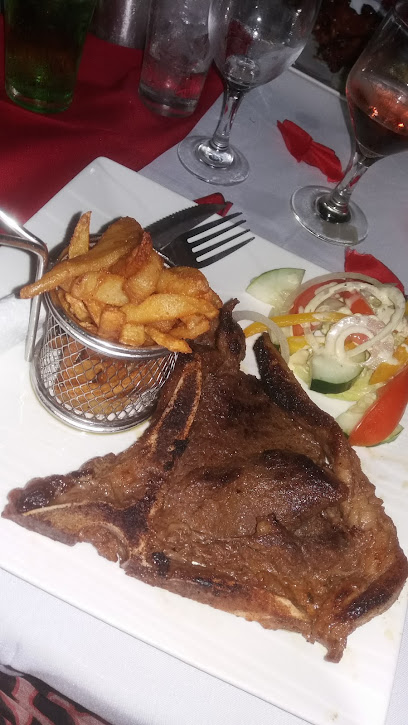
Sundowner Zambezi Lodge
33.9 km
Experience the breathtaking beauty and serenity of Sundowner Zambezi Lodge, a perfect escape for nature lovers and adventure seekers in Zimbabwe.
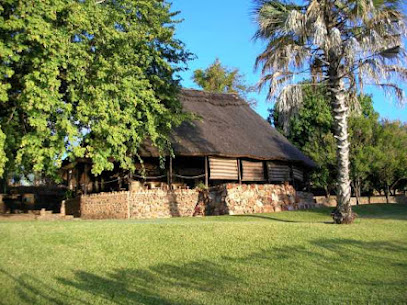
Hwange Horseback Safaris
35.9 km
Experience the thrill of Hwange Horseback Safaris, an unforgettable way to explore Zimbabwe's wildlife and stunning landscapes on horseback.
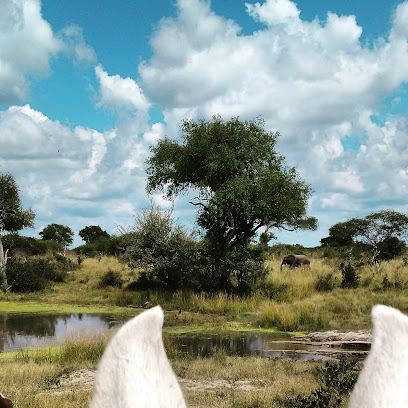
Hideaways Elephant's Eye Tented Camp
35.9 km
Explore the beauty of Zimbabwe at Hideaways Elephant's Eye Tented Camp, an eco-friendly lodge offering an authentic safari experience in the heart of nature.
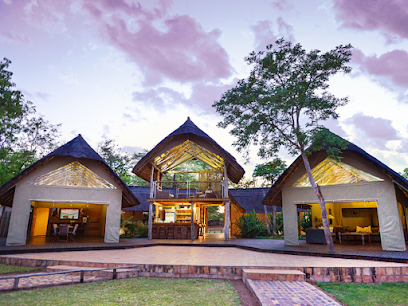
Gwango Heritage Resort
45.4 km
Immerse yourself in nature at Gwango Heritage Resort, a serene retreat in Hwange National Park, perfect for wildlife enthusiasts and relaxation seekers alike.

Hwange Safari Lodge
46.5 km
Experience luxury and adventure at Hwange Safari Lodge, where stunning wildlife meets serene accommodations in Zimbabwe's premier national park.

Gwango Elephant Lodge
47.4 km
Experience luxury and wildlife at Gwango Elephant Lodge, your gateway to the wonders of Hwange National Park, Zimbabwe's premier safari destination.

Hwange Main Camp
50.5 km
Experience the beauty and adventure of Hwange Main Camp, the gateway to Zimbabwe's wildlife wonderland and a haven for nature lovers.
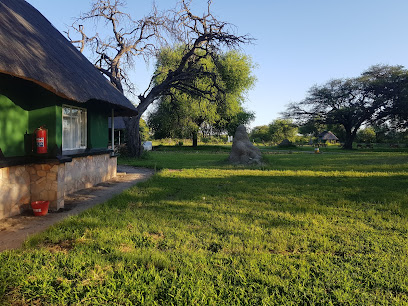
Ivory Safari Lodge & Khulu Bush Camp
50.7 km
Discover the wild beauty of Hwange National Park at Ivory Safari Lodge & Khulu Bush Camp, where adventure meets comfort in a breathtaking landscape.

Sikumi Tree Lodge
54.7 km
Experience the perfect blend of luxury and nature at Sikumi Tree Lodge in Gwayi River Farms, a serene escape for travelers seeking adventure and relaxation.
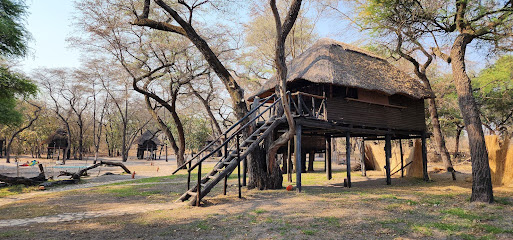
NEHIMBA LODGE
58.2 km
Experience the ultimate wildlife retreat at Nehimba Lodge, a luxurious haven nestled in Zimbabwe's Hwange National Park.

Deteema Springs - Machaba Safaris
59.0 km
Discover the enchanting Deteema Springs Lodge in Hwange National Park, where luxury meets the wild African landscape for an unforgettable adventure.

Camp Hwange
60.0 km
Experience the breathtaking wildlife and serene landscapes at Camp Hwange, your gateway to adventure in Hwange National Park, Zimbabwe.
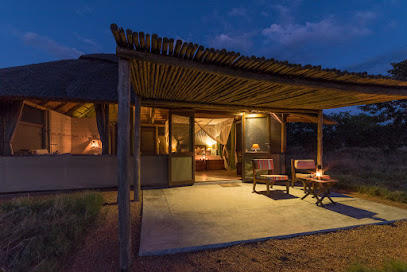
Deteema Dam
62.0 km
Experience the tranquility of Deteema Dam, a serene reservoir in Zimbabwe, perfect for fishing, birdwatching, and enjoying nature's beauty.

Unmissable attractions to see
Lay By
0.4 km
Explore Lay By in Hwange – a serene tourist attraction showcasing Zimbabwe's breathtaking landscapes and wildlife diversity.

Baobab Tree
0.5 km
Explore the iconic Baobab Tree in Hwange, a stunning natural attraction embodying beauty and resilience in Zimbabwe's breathtaking landscapes.

Mpongola Riversand
0.8 km
Explore the breathtaking beauty of Mpongola Riversand in Hwange, Zimbabwe, where nature's tranquility meets adventure in stunning landscapes.

Big Baobab Tree
1.5 km
Explore the magnificent Big Baobab Tree in Hwange, a natural wonder and symbol of Zimbabwe's rich heritage and biodiversity.

Mpongola River Mini Falls
1.5 km
Experience the serene beauty of Mpongola River Mini Falls, a hidden gem in Hwange, perfect for relaxation and nature photography.

Kalope Dam
3.1 km
Explore Kalope Dam, a tranquil oasis in Hwange, perfect for nature lovers and those seeking peace amidst stunning landscapes and wildlife.
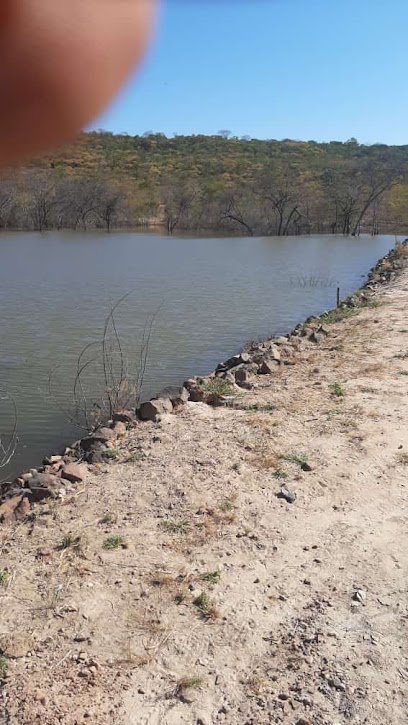
Gamba Pool
8.4 km
Discover the tranquil beauty of Gamba Pool in Hwange, Zimbabwe, a wildlife haven and a serene escape into nature's embrace.

Insomnia park
14.5 km
Discover the serene beauty of Insomnia Park in Hwange, Zimbabwe - a tranquil escape for nature lovers and adventure seekers alike.
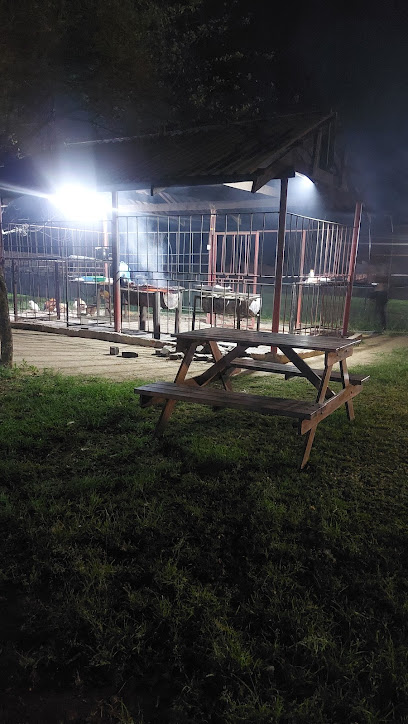
Hwange Zoo Aviary Nature Park
15.1 km
Explore Hwange Zoo Aviary Nature Park, a serene bird watching haven where wildlife thrives and nature's beauty enchants visitors of all ages.

Bhemingham
15.2 km
Explore Bhemingham, a serene tourist attraction in Hwange, Zimbabwe, where nature and culture harmoniously blend for an unforgettable experience.

Mpongola Lay By
16.0 km
Explore the tranquil beauty of Mpongola Lay By, a serene retreat in Hwange, perfect for nature lovers and adventurers alike.

Hwange national park
16.0 km
Discover the wild heart of Zimbabwe at Hwange National Park, where majestic elephants roam and spectacular landscapes await.

Sugar Sugar Baobab Tree
16.0 km
Discover the majestic Sugar Sugar Baobab Tree in Hwange, a natural wonder that embodies the beauty and resilience of Zimbabwean nature.

Lukosi River Bridge
16.0 km
Experience the breathtaking beauty of Zimbabwe at Lukosi River Bridge, a serene escape into nature's wonders in Hwange.
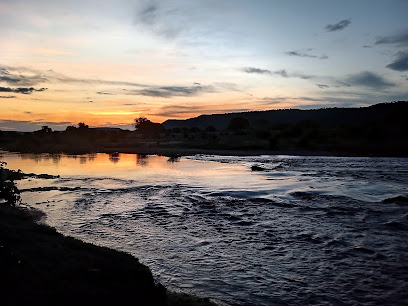
Gulalembila Dam
16.0 km
Explore the tranquil beauty of Gulalembila Dam in Hwange, a hidden gem for nature lovers and wildlife enthusiasts.

Essential places to dine
Eating House
2.8 km
Discover authentic Zimbabwean cuisine at the Eating House in Hwange - where every meal is a celebration of local flavors.

Chye's Chicken Hut & Spice World
14.1 km
Discover the vibrant flavors of Zimbabwe at Chye's Chicken Hut & Spice World in Hwange – where every dish tells a story.

Café Hwange
14.3 km
Discover delightful flavors at Café Hwange, where local cuisine meets warm hospitality amidst the beauty of Zimbabwe.

The Spot Restaurant
14.8 km
Experience the authentic taste of Zimbabwe at The Spot Restaurant in Hwange – where flavor meets culture.

Gajitunda Beer Hall
14.9 km
Discover the vibrant atmosphere of Gajitunda Beer Hall in Hwange, where local brews meet warm hospitality in an unforgettable experience.

Upshot Mabhiza
15.0 km
Discover delicious grilled dishes at Upshot Mabhiza in Hwange - where local flavors meet warm hospitality.
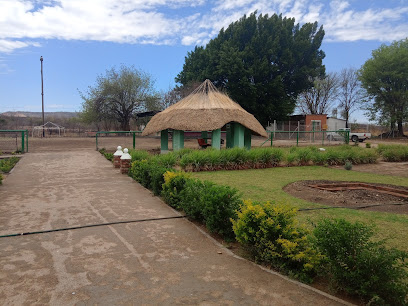
Shadows Grill House
15.6 km
Discover delightful family-friendly dining at Shadows Grill House in Hwange, where delicious meals meet warm hospitality amidst stunning surroundings.

Pizza Inn
15.9 km
Discover delicious pizzas made with fresh ingredients at Pizza Inn in Hwange – the perfect stop for travelers craving Italian flavors.

Chicken Inn
15.9 km
Discover delicious fast food delights at Chicken Inn in Hwange—where every meal is a tasty adventure.

Sports Cafe
16.4 km
Discover Hwange's vibrant sports scene at Sports Cafe - where delicious food meets thrilling live sports action.
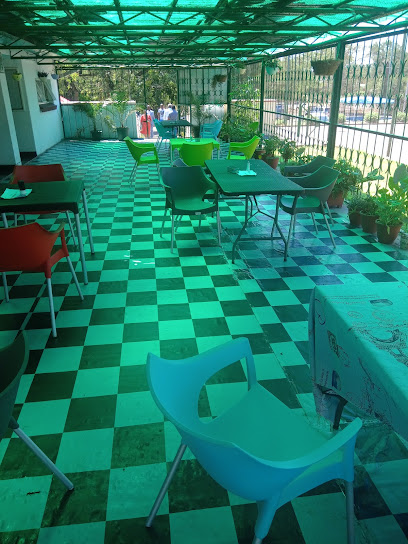
Grill it Leisure Corner Restuarant
16.9 km
Experience authentic Zimbabwean cuisine at Grill It Leisure Corner Restaurant in Hwange - where flavor meets hospitality.

Afro Inn Takeaways
17.0 km
Experience authentic Zimbabwean cuisine at Afro Inn Takeaways in Hwange – where every meal tells a story.
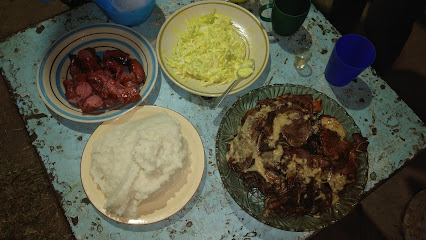
Rail View Restuarant
17.4 km
Experience authentic Zimbabwean cuisine with stunning views at Rail View Restaurant in Hwange.

Hwange Main Camp Restaurant
50.6 km
Experience authentic Zimbabwean cuisine amidst stunning natural beauty at Hwange Main Camp Restaurant in Hwange National Park.
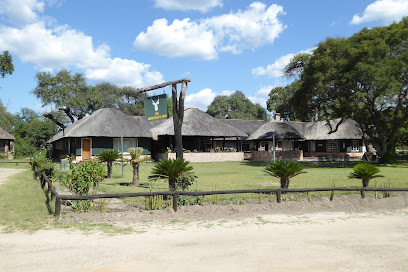
Dzimahwe lounge
90.0 km
Experience authentic Zimbabwean cuisine at Dzimahwe Lounge in Hwange - where every meal tells a story of local culture.

Markets, malls and hidden boutiques
Mpongola Store
1.3 km
Explore the essentials of Hwange at Mpongola Store, your go-to convenience shop for snacks, supplies, and local goods.

Mazulu General Dealer
2.8 km
Explore local culture and essential supplies at Mazulu General Dealer in Hwange, a vibrant hub for tourists and locals alike.

Taswika General Dealer
2.9 km
Experience the vibrant local culture and flavors at Taswika General Dealer, your go-to grocery store in Hwange, Zimbabwe.

Lukosi Business Center
2.9 km
Experience the essence of local shopping and culture at Lukosi Business Center in Hwange, Zimbabwe's vibrant retail destination.

St. Mary's Shopping Mall
3.5 km
Discover the convenience of St. Mary's Shopping Mall in Hwange, the perfect stop for supplies and unique local finds during your Zimbabwe adventure.

ZEDTC Hwange CSC
13.6 km
Explore the best electronics store in Hwange, where technology meets convenience for every traveler seeking quality gadgets and accessories.

Mr Fix it Hardware
14.0 km
Explore Mr Fix It Hardware in Hwange for all your DIY needs, offering a wide range of tools and supplies for every project.

Justrite Hardware Supplies
14.1 km
Justrite Hardware Supplies in Hwange offers a wide range of quality tools and materials for all your DIY and home improvement needs.

DRC shops
14.1 km
Experience the vibrant local culture and unique crafts at DRC shops in Hwange, a must-visit destination for every traveler.

Peepols General Dealer
14.1 km
Explore local culture and convenience at Peepols General Dealer, Hwange's go-to grocery store for travelers and locals alike.

Empumalanga Shopping Centre
14.8 km
Explore the Empumalanga Shopping Centre in Hwange for a unique blend of local shopping, dining, and cultural experiences perfect for tourists.

Empumalanga Hwange Shops
14.9 km
Discover the Empumalanga Hwange Shops for essential goods and local flavors in the heart of Hwange, Zimbabwe, enhancing your travel experience.

Shazy Cosmetics and Fashion
14.9 km
Discover quality cosmetics and fashion at Shazy Cosmetics and Fashion in Hwange's Empumalanga Centre, where beauty meets style.

CHICKEN CHOPS
14.9 km
Discover authentic local flavors and high-quality meats at Chicken Chops in Hwange, a butcher shop deli that delights every palate.

MK HWANGE
15.0 km
Discover the local charm of MK Hwange, a vibrant store offering essential supplies and unique souvenirs in the heart of Zimbabwe.

Essential bars & hidden hideouts
Madidilika Bottle Store
2.9 km
Experience the vibrant culture of Hwange at Madidilika Bottle Store, where local brews and friendly company await in a cozy setting.

El Dorado Rock Park
14.6 km
Experience the laid-back charm of El Dorado Rock Park in Hwange, where local culture and stunning views create an unforgettable escape.
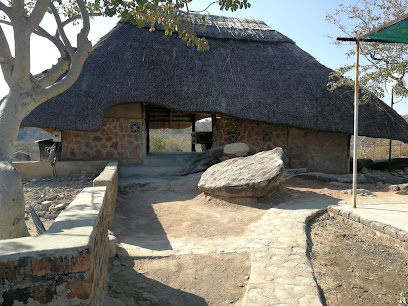
ZPC Social Club
15.6 km
Experience the charm of Hwange at ZPC Social Club, a cozy guest house with a local vibe and affordable amenities.

Hwange Cricket Club
15.7 km
Discover the lively atmosphere and delightful cocktails at Hwange Cricket Club, the perfect spot to unwind in Hwange, Zimbabwe.

NRZ BEERHALL
16.0 km
Experience the vibrant local culture at NRZ Beerhall, Hwange's lively bar offering a great selection of drinks and authentic Zimbabwean hospitality.

Baobab Hotel
16.0 km
Discover the charm of Hwange at Baobab Hotel, your gateway to Zimbabwe's breathtaking wildlife and natural beauty.

Colliery Club
16.4 km
Discover the Colliery Club in Hwange - A vibrant sports hub where locals and visitors mingle in a lively atmosphere filled with camaraderie and community spirit.

Tennis Club
16.4 km
Experience the vibrant atmosphere of the Tennis Club in Hwange, where sports and community spirit come together in a beautiful setting.
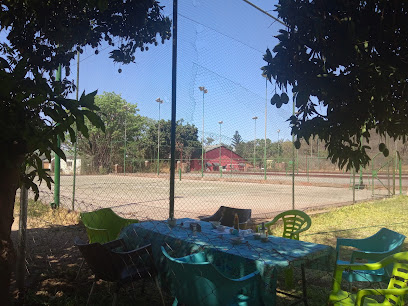
Tshanini Bar
34.6 km
Experience the lively atmosphere of Tshanini Bar in Dete, where local brews and friendly faces await in a welcoming beer hall.

Lions Den Bar
34.6 km
Discover the lively atmosphere of Lions Den Bar in Dete, where great beers meet a welcoming community in the heart of Zimbabwe.

Dete Cocktail bar
35.0 km
Discover the vibrant atmosphere of Dete Cocktail Bar, a must-visit beer hall offering local drinks and a lively ambiance.

Elephant and Dassie Restaurant
42.6 km
Experience the rich flavors of Zimbabwean cuisine at Elephant and Dassie Restaurant, nestled in the picturesque Sinamatella Camp.

Picnic Spot
77.3 km
Discover tranquility at Picnic Spot, a perfect blend of nature, relaxation, and culinary delights in Zimbabwe.

The elephant sounds lodge
83.4 km
Experience the essence of wildlife and luxury at The Elephant Sounds Lodge in Hwange National Park, a serene escape for nature lovers.

Shearwater Bungee Cafe & Registration
97.5 km
Experience adventure and relaxation at Shearwater Bungee Cafe in Livingstone, the perfect stop for food lovers and thrill-seekers alike.
